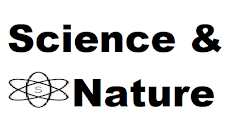In a historic breakthrough, the James Webb Space Telescope (JWST) has given humankind its sharpest view yet of the boundary of the observable universe—revealing secrets from a moment barely a few hundred million years after the Big Bang. This breakthrough is a turning point in humanity's appreciation of the universe and its own position within it.
A Look Back in Time
Whereas the Hubble Space Telescope was constrained in how far back in time it could look, JWST's powerful infrared sensitivities enable it to see through bright foreground dust to find distant, redshifted light from the first galaxies. When scientists refer to the "edge" of the observable universe, they are referring to the most distant point from which light has had time to travel to reach us since the start of the universe—about 13.8 billion years ago.
In its newest observations, JWST detected light from several ancient galaxies that formed as early as within 300 million years of the Big Bang. Not only are these galaxies some of the oldest ever observed, but they also look surprisingly mature—hosting more stars and structure than they were thought to have at that early time.
Shocking Discoveries
The new data challenges long-held theories about the timeline of cosmic evolution. According to Dr. Maia Keller, an astrophysicist with NASA’s JWST program, “We thought the early universe was a chaotic, unformed place. But what we’re seeing are well-developed galaxies that force us to reconsider how quickly matter assembled into stars, planets, and potentially life.”
A few of the galaxies have evidence of heavy elements—elements born in the cores of stars—which indicates that the initial generation of stars could have formed and perished much more quickly than previously believed. This might indicate that the mechanisms involved in galaxy production were much more efficient in the early universe.
The Cosmic Horizon
At the center of these findings stands the idea of the "cosmic horizon." This edge is the boundary of what we're able to see, not because it's a physical boundary, but because light from the other side hasn't yet had time to reach us. As the cosmos continues to grow, that edge moves, and more ancient light becomes available for telescopes like JWST to observe.
But JWST is not only picking up light from faraway galaxies—it's also gathering information regarding the intergalactic medium, the unknown stuff that fills the great expanses of space between galaxies. That data may provide scientists with clues to understand how dark matter and dark energy influenced the evolution of the early universe.
What Lies Beyond
So, what is beyond the edge of the observable universe? Literally, it's a ocean of ancient galaxies, nascent stars, and primordial hydrogen clouds. But metaphorically, it's the origin of everything—the birthplace of time, space, and matter as we understand it. It's where the first light pierced the cosmic night, marking the dawn of existence.
As JWST keeps scanning the distant reaches of the universe, astronomers hope that even more astonishing surprises are in store. Every new picture, every new spectrum, is like a message from before Earth was around—whispering secrets about how the universe came into being and what the future may hold.
A New Cosmic Era
The James Webb Space Telescope is not merely looking into the far past. It's rewriting the cosmic history itself. And as we look at those tiny sparkles of starlight from so long ago, we're reminded of just how vast and how mysterious the universe is—and how far we've traveled towards grasping it.
In the words of Dr. Keller, “With every new discovery,
we’re not just learning about space—we’re learning about ourselves.”




.jpg)
0 Comments